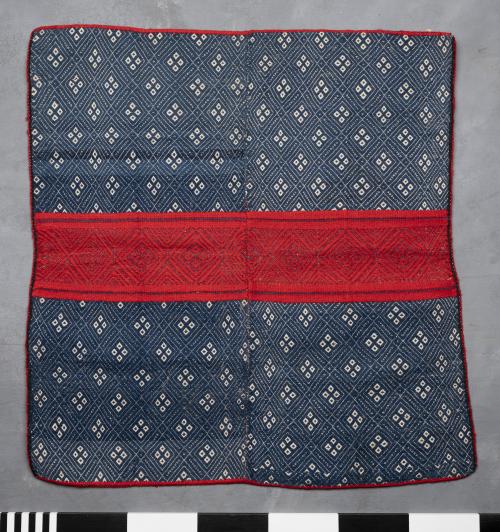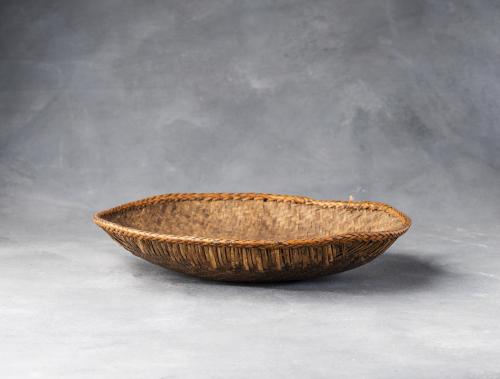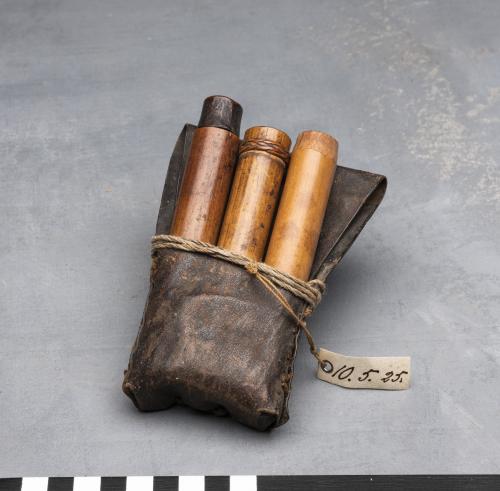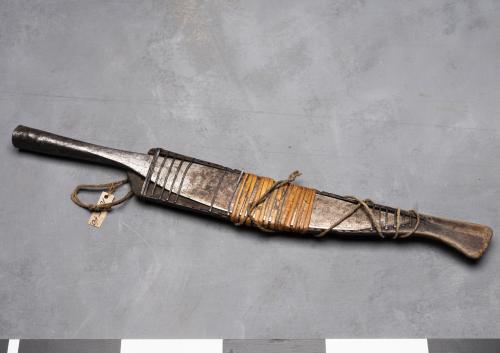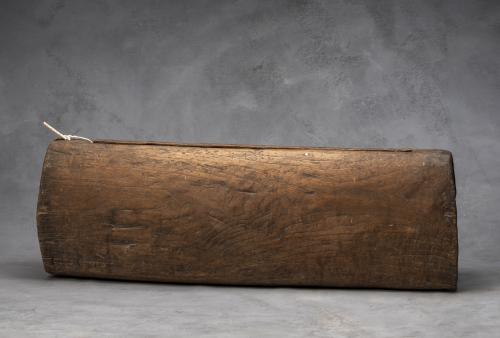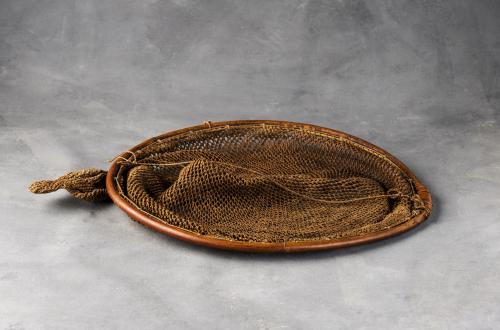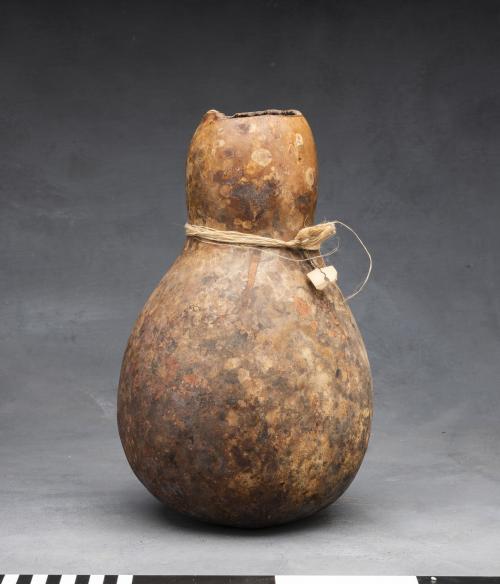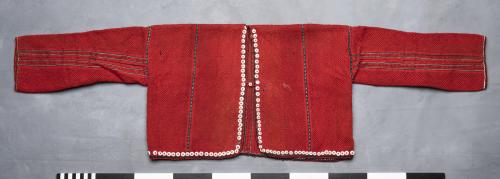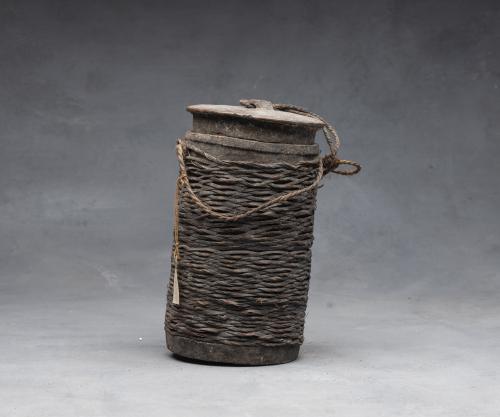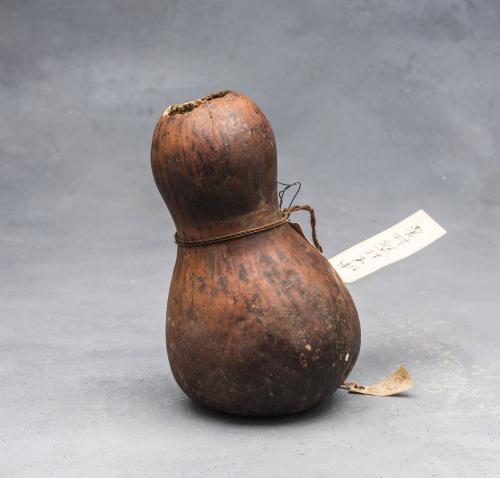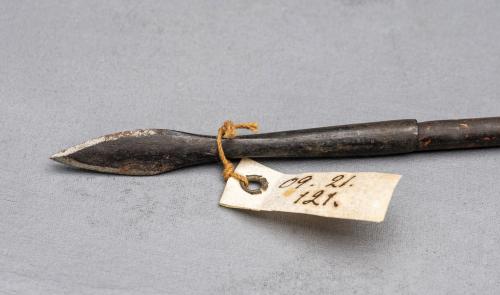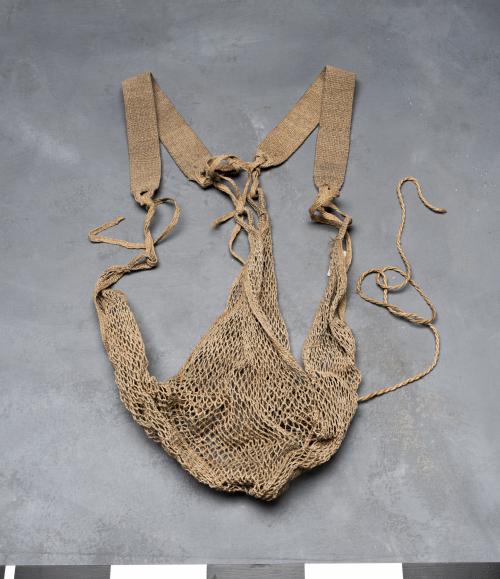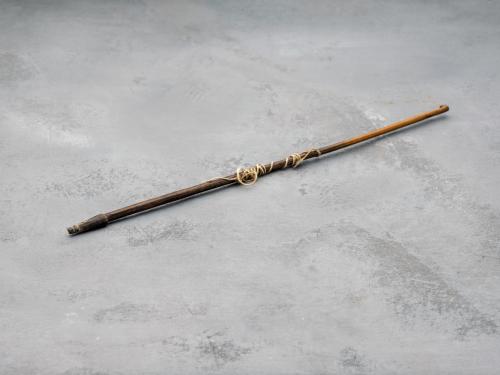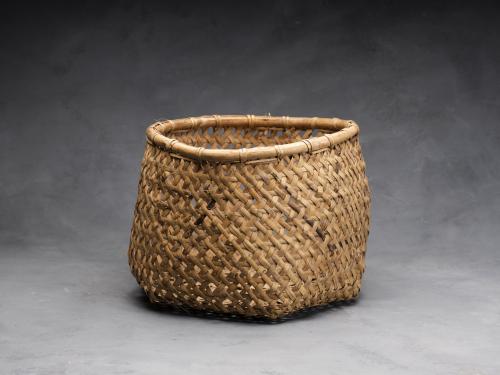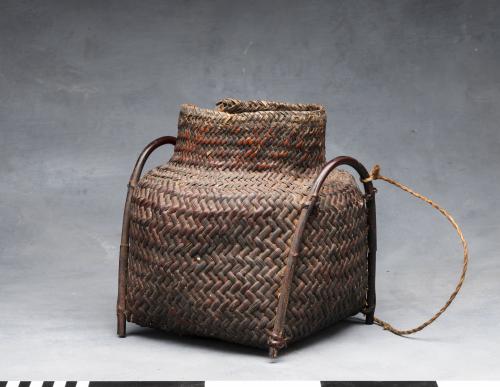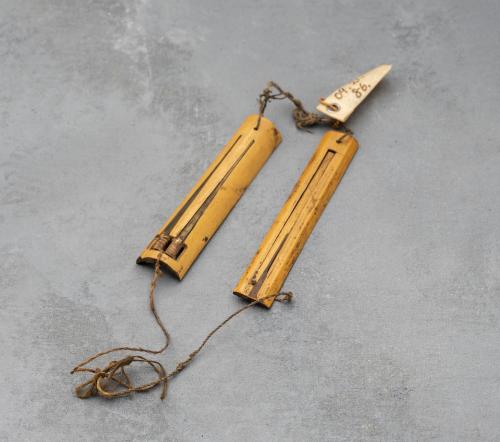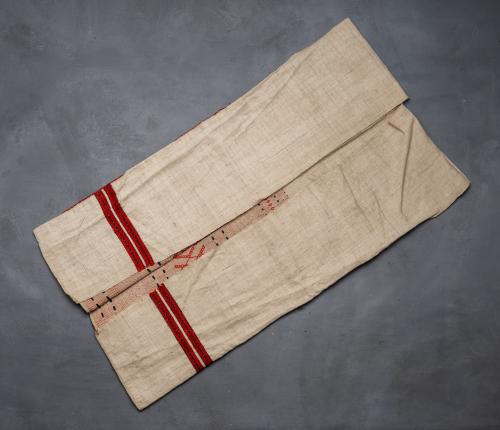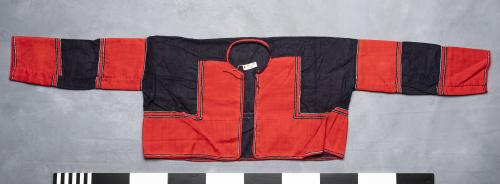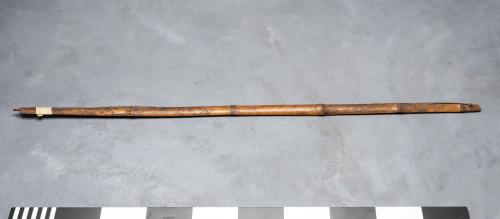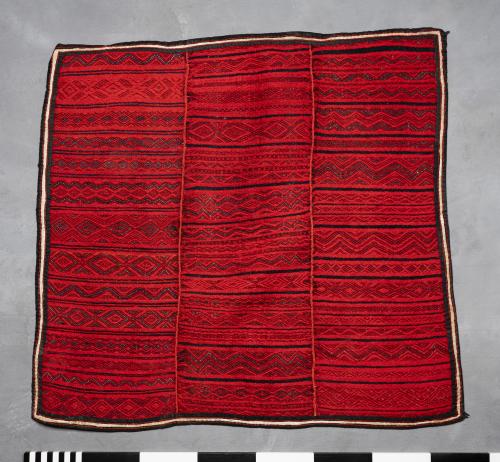全部藏品
探索22個藏品
Shawl / 披肩 / Pala Tikuh
National Museums of World Culture, Sweden
This shawl comes from the Wanda dialect group of Atayal peoples.
Tray / 圓箕 / Btuku
National Museums of World Culture, Sweden
This type of tray has multiple uses: drying crops, separation chaff from grain, fementing grains for alcohol, storage, etc.
Gunpowder containers / 火藥筒 / Kulu qblic puniq
National Museums of World Culture, Sweden
Each of the bamboo tubes contained enough gunpowder for one shot.
Bayonet Knife / 刺刀 / Suqu
National Museums of World Culture, Sweden
This type of knife has a hollow handle. Even after being caught in traps, animals, such as wild boars, are still dangerous.
WEAVING DRUM FOR A BACKSTRAP LOOM / 織布箱 / Ubung
National Museums of World Culture, Sweden
Part of a backstrap loom that the Seediq traditionally used while sitting on the floor.
Strainer / 濾網 / Sisi sino
National Museums of World Culture, Sweden
This net would have been used for straining during the alcohol making process. Traditional alcohol was made from either millet or glutinous rice.
Water Containers /水壺 / Qriyan
National Museums of World Culture, Sweden
These water containers are made from gourds that have been dried and hollowed out.
Woman's festive shirt / 女子上衣 / Lukus ratang
National Museums of World Culture, Sweden
The material for this shirt was woven with pala pniri, which is the most difficult Seediq weaving technique.
Salt Container / 鹽罐 / Cuqi tumu
National Museums of World Culture, Sweden
Salt was a commodity that had to be obtained through trade. This container is made from a bamboo tube wrapped with braided yellow rattan.
Water Containers / 水壺 / Qriyan
National Museums of World Culture, Sweden
These water containers are made from gourds that have been dried and hollowed out.
Arrow / 箭矢 / Budi
National Museums of World Culture, Sweden
The materials used for making the arrow shafts were chosen because they could be made straight.
Net Bag / 網袋 / Tokan bale
National Museums of World Culture, Sweden
The use and production of net bags made from thick ramie thread is usually associated with men.
Blanket Material / 毯子材料 / Pala ratu
National Museums of World Culture, Sweden
Traditional blankets are made from one woven length of cloth that was cut into three equal lengths and sewn together.
Spindle / 紡錘 / Tyadan
National Museums of World Culture, Sweden
A weight would be attached to the bottom edn to help the spindle spin and twist the ramie fibres into thread.
Storage Baskets / 儲物籃 / Rawa
National Museums of World Culture, Sweden
使用藤與竹編織籃子和用粗麻編成網袋與背帶,通常會被認定為男性的工作。這類籃子通常作為多功能儲藏用。
Storage Baskets / 儲物籃 / Rawa
National Museums of World Culture, Sweden
使用藤和竹編織籃子和用粗麻編成網袋與背帶,通常會被認定為是男性的工作。這類籃子通常作為多功能儲藏用。
Mouth Harps / 口簧琴 / 左:Tubu Daha 右:Tubu Qoqo
National Museums of World Culture, Sweden
Mouth harps are an ancient type of musical instrument that uses the mouth and throat as a resonator.
Man's sleeveless shirt / 男子上衣 / Lukus rseno
National Museums of World Culture, Sweden
Men's shirts are longer than women's shirts but do not cover the knees. This shirt was made from two lengths of cloth joined in the middle.
Woman's festive shirt / 女子上衣 / Ratang
National Museums of World Culture, Sweden
This shirt was sewn together from cotton cloth that would have been acquired through trade.
Bow / 弓 / Bhenaq
National Museums of World Culture, Sweden
This short bow was used forr hunting. When not being used, the bowstring is detached from one end, so the bow can relax.
Headhunting Knife / 獵首刀 / Slmadac
National Museums of World Culture, Sweden
A headhunting knife was the most important social symbol for Seediq men. The owner guarded it, especially against women touching it.
SHAWL / 披肩 / Pala slaban ahing
National Museums of World Culture, Sweden
This shawl was worn on important occasions and is considered to be a masterpiece by some Seediq weavers today.

